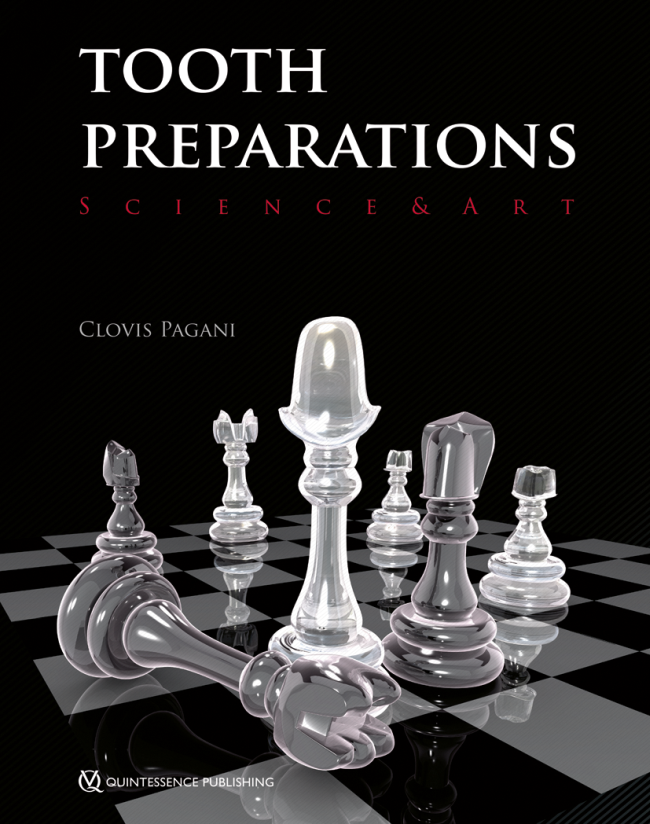International Journal of Esthetic Dentistry (DE), 1/2015
Seiten: 154-164, Sprache: DeutschFernandes jr., Virgílio Vilas Boas / Rodrigues, José Roberto / da Silva, João Maurício Ferraz / Pagani, Clovis / Souza, Rodrigo Othávio AssunçãoZiel dieser Studie war es, zu untersuchen, welchen Einfluss eine Oberflächenbehandlung und das Thermocycling auf die Mikrozugfestigkeit (μTBS) von selbstadhäsivem Kompositzement auf menschlichem Schmelz und Dentin hat. Für diese In-vitro-Studie wurden 80 humane dritte Molaren als Proben verwendet. Bei 40 Zähnen wurden die Kronen quer durchgesägt, um das mittlere koronale Dentin freizulegen. Die Bukkalflächen der restlichen 40 Zähne wurden so geschliffen, dass ein flacher Schmelzbereich von 5 mm2 entstand. 80 Kompositblöcke wurden hergestellt und mit RelyX Unicem auf die Zahnflächen zementiert. Dabei entstanden je nach Oberflächenbehandlung verschiedene Gruppen (n = 10): UnicemC ohne Oberflächenbehandlung; UnicemP, Behandlung mit 37 % Phosphorsäure für 15 s und UnicemPA, Behandlung mit 37 % Phosphorsäure für 15 s mit Bonding (Single Bond 2). Es gab zwei Kontrollgruppen, eine für Schmelz und eine für Dentin: VR mit 37 % Phosphorsäure für 15 s mit Bonding (Single Bond 2) und Variolink II. Die Schmelz-/Dentin- Kompositblöcke wurden in stabförmige Segmente gesägt und nicht weiter nachbearbeitet. Anschließend wurden die Proben je nach Lagerungsbedingung in zwei Gruppen eingeteilt: 1. trockene Lagerung mit μTBS-Test unmittelbar nach dem Sägen, 2. Thermocycling (TC) (5000 Zyklen bei 5 °C/55 °C). Auch diese Proben durchliefen danach einen μTBS-Test. Für die Datenanalyse wurden die ANOVA und der Tukey-Test herangezogen. Die Ergebnisse zeigten zwischen UnicemC und den anderen Zementen statistisch signifikante Unterschiede. UnicemPA und VR zeigten vor bzw. nach dem Thermocycling eine höhere Haftfestigkeit zum Dentin. UnicemP wies in beiden Situationen eine höhere Haftfestigkeit zum Schmelz auf. Nur bei UnicemPA sank die Haftfestigkeit nach dem Thermocycling signifikant. Innerhalb der Grenzen dieser Studie zeigte sich, dass die Haftfestigkeit durch die Oberflächenbehandlung beeinflusst wird und dass das Thermocycling die Haftfestigkeit in allen Gruppen reduziert. Statistisch signifikant war dies jedoch nur bei UnicemPA.
International Journal of Esthetic Dentistry (EN), 1/2015
PubMed-ID: 25625131Seiten: 146-156, Sprache: EnglischFernandes jr., Virgílio Vilas Boas / Rodrigues, José Roberto / da Silva, João Maurício Ferraz / Pagani, Clovis / Souza, Rodrigo Othávio AssunçãoThe purpose of this study was to evaluate the influence of surface treatments and thermocycling on the microtensile bond strength (μTBS) of self-adhesive resin cement to human enamel and dentin. Eighty human third molars were selected. The crowns of 40 teeth were transversally sectioned, exposing the mid-coronal dentin. The buccal surfaces of the other 40 teeth were grinded to obtain a 5 mm2 flat enamel area. Eighty resin blocks were produced and cemented to the dental surfaces with RelyX Unicem, then grouped according to the surface treatment (n = 10): UnicemC with no conditioning, UnicemP with 37% phosphoric acid/15 s, and UnicemPA with 37% phosphoric acid/15 s plus adhesive bonding (Single Bond 2). There were two control groups, one for enamel and the other for dentin: VR with 37% phosphoric acid/15 s plus adhesive bonding (Single Bond 2) plus Variolink II. The enamel-dentin resin cement blocks were sectioned to produce non-trimmed bar specimens, which were divided into two storage conditions: dry, μTBS immediately after cutting; TC (5,000 x; 5°C/55°C). The samples were submitted to μTBS, and data were statistically analyzed by ANOVA and Tukey's test. The results showed statistical differences between UnicemC and the others. UnicemPA and VR showed better bond strength to dentin during the period before and after thermocycling, respectively. For the enamel, UnicemP showed better bond strength for both situations. Only for UnicemPA did the thermocycling significantly decrease the bond strength values. Within the limits of this study, it could be concluded that the bond strength is influenced by the surface treatments, and that thermocycling decreases the bond strength of all groups, but significantly only for UnicemPA.
The Journal of Adhesive Dentistry, 3/2011
DOI: 10.3290/j.jad.a19228, PubMed-ID: 21734955Seiten: 231-234, Sprache: EnglischBenetti, Paula / Fernandes, Virgílio Vilas Boas Junior / Torres, Carlos Rocha Gomes / Pagani, ClovisPurpose: This study evaluated the efficacy of the union between two new self-etching self-adhesive resin cements and enamel using the microtensile bond strength test.
Materials and Methods: Buccal enamel of 80 bovine teeth was submitted to finishing and polishing with metallographic paper to a refinement of #600, in order to obtain a 5-mm2 flat area. Blocks (2 x 4 x 4 mm) of laboratory composite resin were cemented to enamel according to different protocols: (1) untreated enamel + RelyX Unicem cement (RX group); (2) untreated enamel + Bifix SE cement (BF group); (3) enamel acid etching and application of resin adhesive Single Bond + RelyX Unicem (RXA group); (4) enamel acid etching and application of resin adhesive Solobond M + Bifix SE (BFA group). After 7 days of storage in distillated water at 37°C, the blocks were sectioned for obtaining microbar specimens with an adhesive area of 1 mm2 (n = 120). Specimens were submitted to the microtensile bond strength test at a crosshead speed of 0.5 mm/min. The results (in MPa) were analyzed statistically by ANOVA and Tukey's test.
Results: Enamel pre-treatment with phosphoric acid and resin adhesive (27.9 and 30.3 for RXA and BFA groups) significantly improved (p = 0.05) the adhesion of both cements to enamel compared to the union achieved with as-polished enamel (9.9 and 6.0 for RX and BF).
Conclusion: Enamel pre-treatment with acid etching and the application of resin adhesive significantly improved the bond efficacy of both luting agents compared to the union achieved with as-polished enamel.
Schlagwörter: enamel, acid etching, adhesives, luting agents, tensile bond strength






